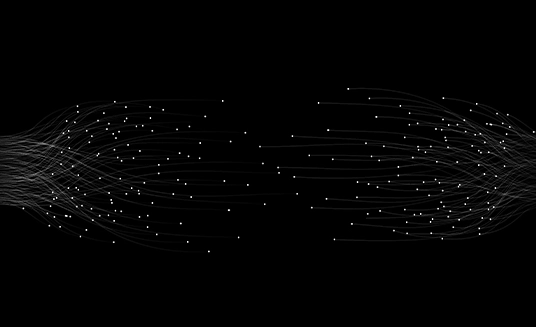- Posted on : July 29, 2022
-
- Industry : Corporate
- Service : Data & Insights
- Type: Blog

In this data-driven world, it’s an accepted fact that more data means a more accurate picture of your business environment. This leads to smarter decisions, new opportunities, reduced risk, and other benefits. Analyzing dark data uncovers previously unknown factors and enriches data repositories. So why aren’t more companies using it?
What Is Dark Data?
Much of the data currently used for business analysis is known as structured data. It can fit into database tables and spreadsheets, and it’s fairly easy for machines to process and analyze. Dark data, on the other hand, often belongs to classes of data that don’t fit tidily into a uniform structure, such as email and document contents, videos, images, and sensor or motion data. This has traditionally been harder to process and analyze in quantity.
There’s another side to dark data: information that’s available but hasn’t been used. This could be information that’s generated by internal teams but not collected. Or it could be information that’s collected but not processed or analyzed. As data storage is inexpensive, many companies house data “just in case” it becomes useful later on. But this data merely sits there, without ever being used.
Interestingly, most experts agree that unused dark data makes up the bulk of the data we generate. This represents a potential goldmine of discoveries. Now that new analytics and processing technologies can handle the semi-structured text, video, and sensor data described above, what do companies need to do to leverage it?
How to Leverage Dark Data
Progress in Artificial Intelligence – specifically in deep learning, machine learning, and cognitive computing – as well as the democratization of such technologies are putting very powerful data analytics options within the reach of most organizations. To transform dark data into usable data, the following things need to be in place:
- A data collection engine that can handle semi-structured data from many sources.
- Context-sensitive data capturing that can correlate related events and enrich individual points with additional metrics.
- Real-time data processing and transformation (i.e. into an analysis-ready form).
As you might guess, this takes us into the territory of streaming analytics, or the real-time processing, transformation, and analysis of data. As such, it demands skilled analytics engineering assistance; however, the potential benefits of the instant insight availability make this a promising investment. For example, such data systems can support in-transaction data collection and processing, which streamlines later data transformation. It can also allow you to access detailed metrics that might otherwise be lost, such as motion or operational data.
Key Dark Data Use Cases
Currently, the main use cases for dark data are as follows:
- Leveraging in-transit data to create data on (real) demand. Most ‘temporary’ data is never collected or used, largely due to the complexities of doing so with traditional analytics systems like API or XML integrations.
- Mining IoT, sensor, and device data and efficiently transforming it into usable insights for motion intelligence and location-based analytics purposes.
- Deriving operational insights from machine data (i.e., from manufacturers and other industrial uses) to unlock efficiencies.
What Are the Benefits of Using Dark Data?
We’ve already mentioned the high-level benefits of tapping into your dark data store, i.e. surfacing hidden insights and using the most accurate and up-to-date information. Let’s now consider some of the finer-grained results:
- Fuller insight into consumers, markets, etc.
- Discovering unsuspected correlations between data points.
- Finding potential new revenue streams.
- More accurate and timely analytics.
- Better agility in responding to data access requests.
While taking advantage of your dark data requires an investment of time, expertise, and budget, the ROI from this investment has the potential to be immense. As the volume of data available to organizations continues to grow, companies will be looking for additional ways to separate themselves from the competition. Leveraging dark data may well provide the key to this competitive advantage.









